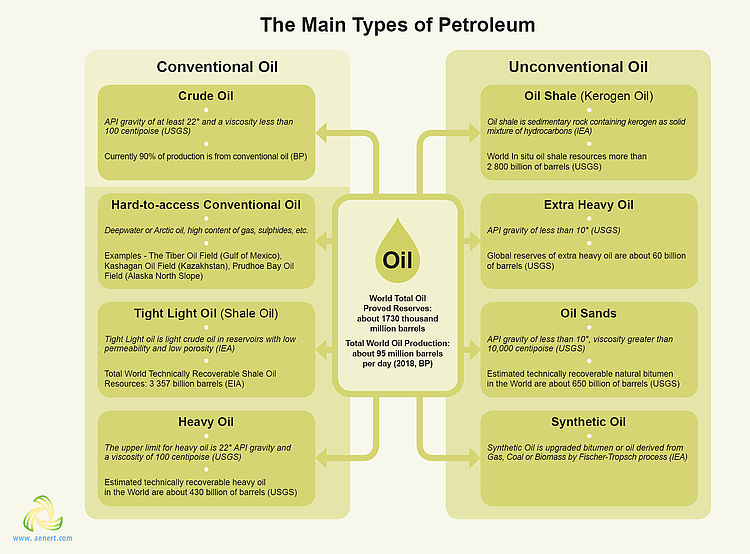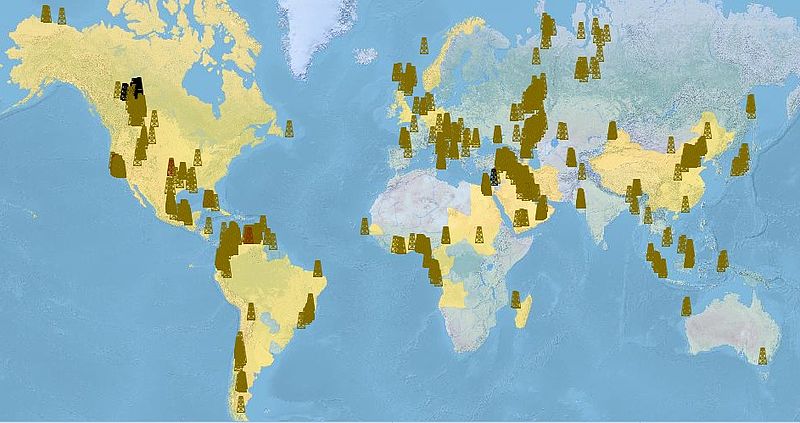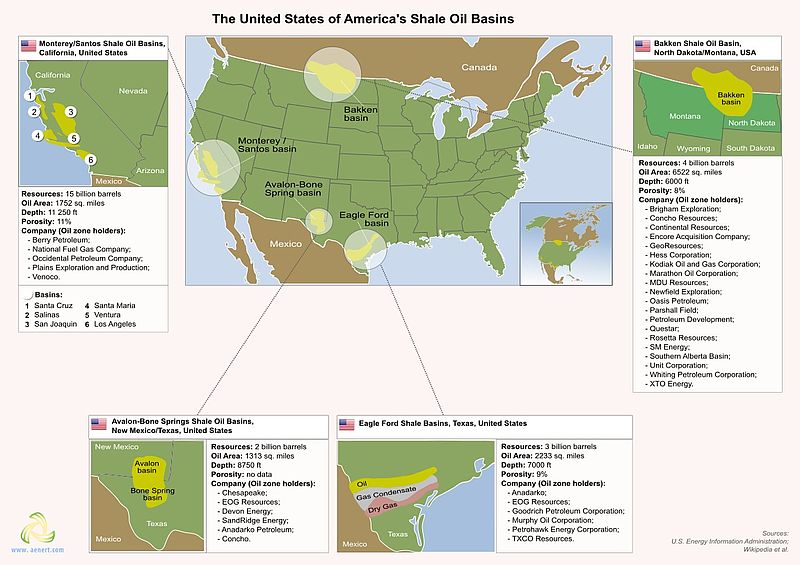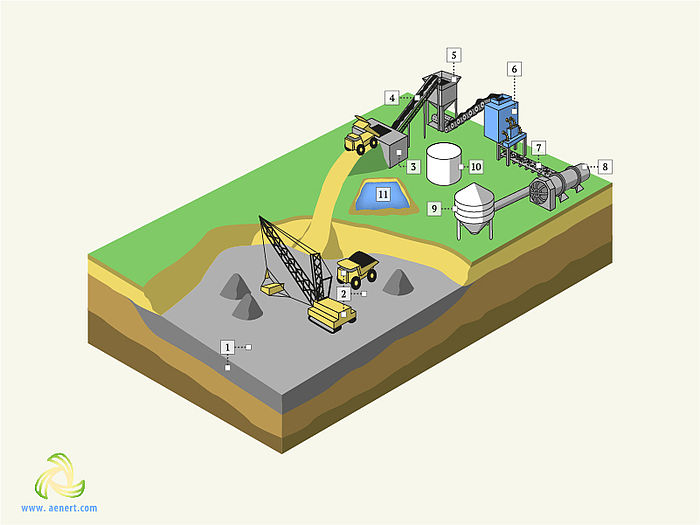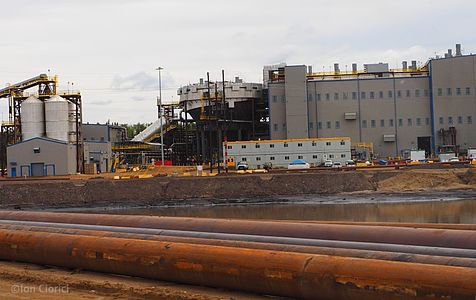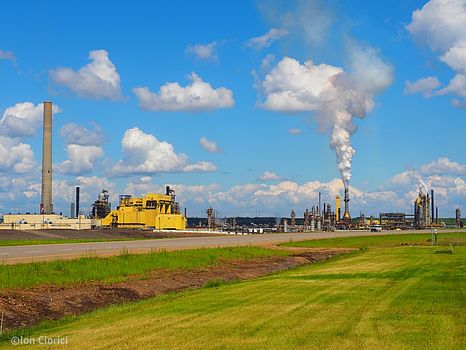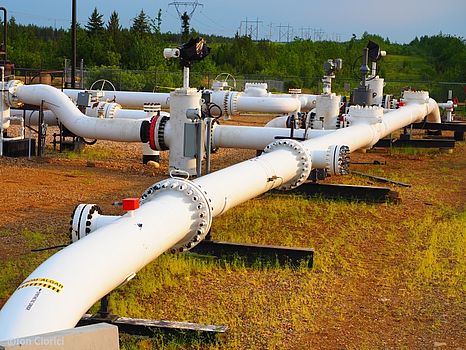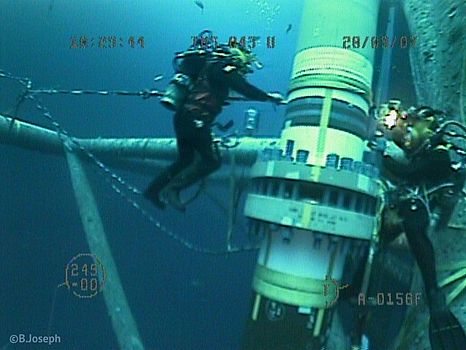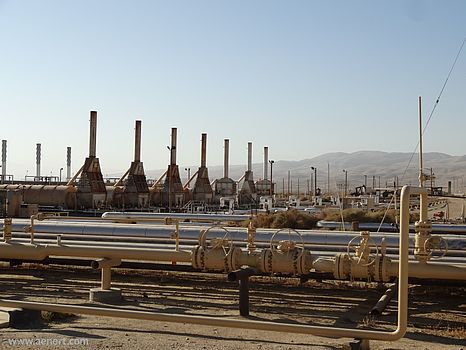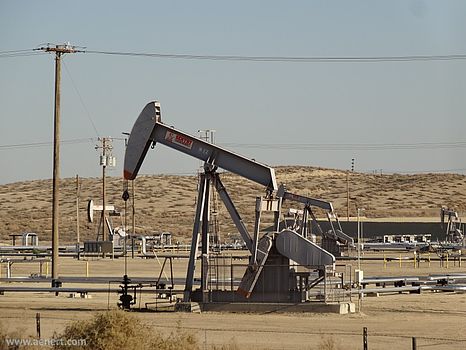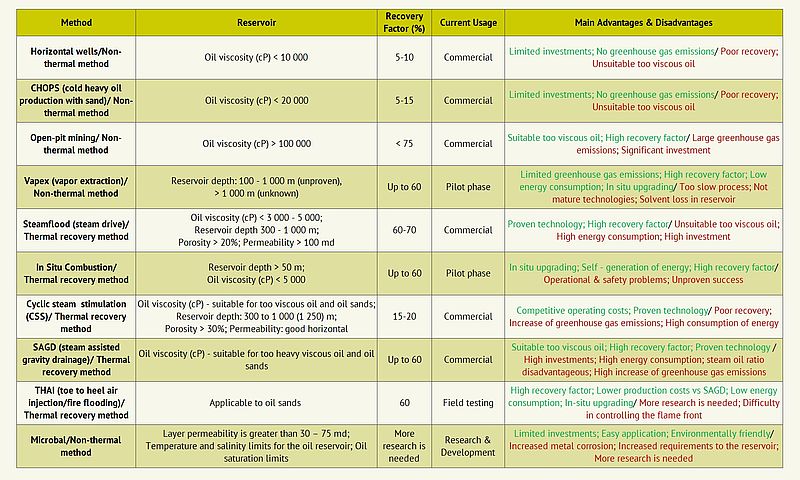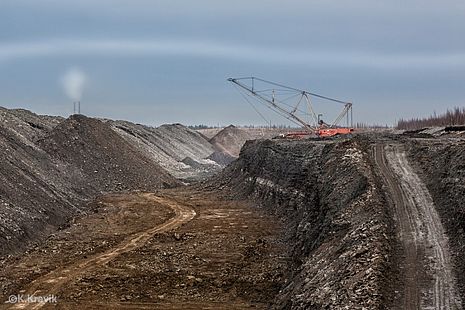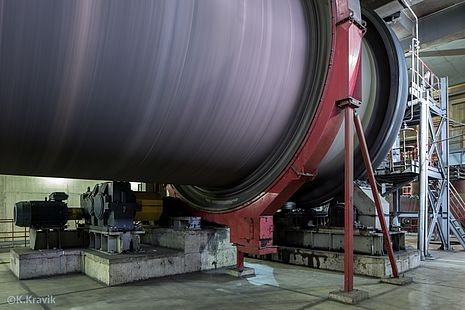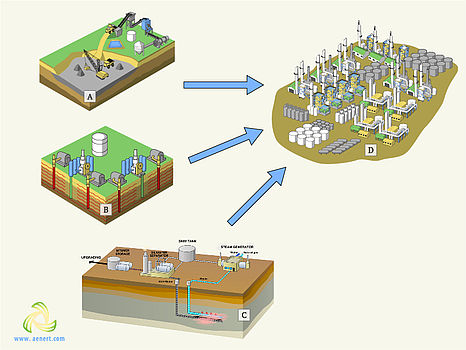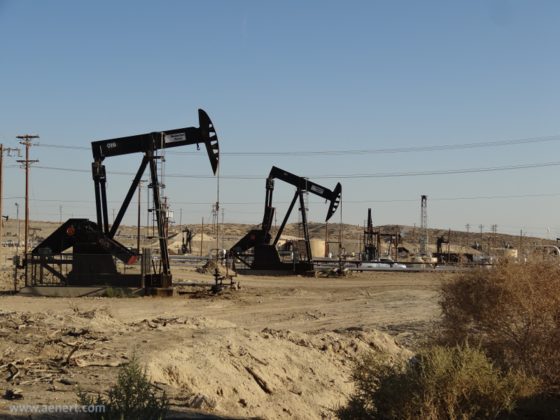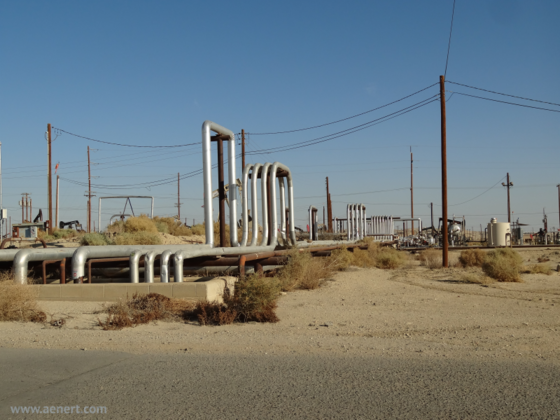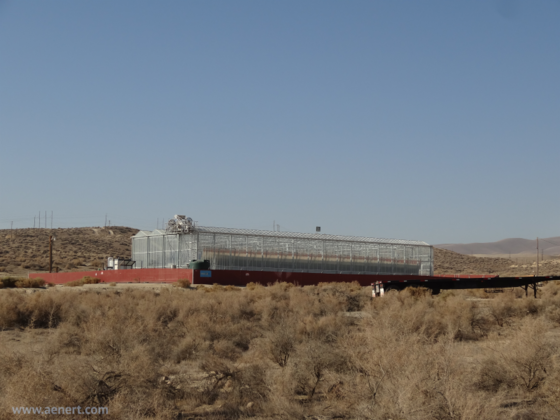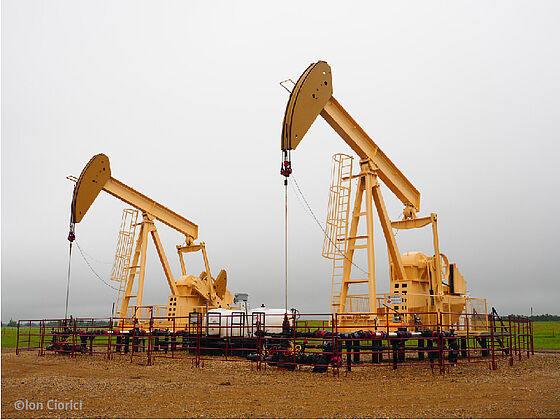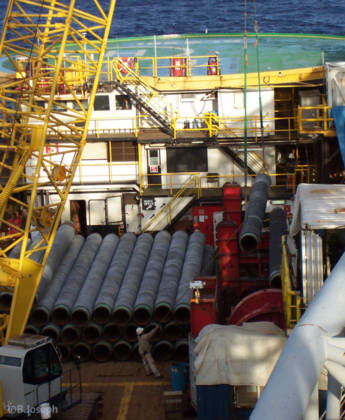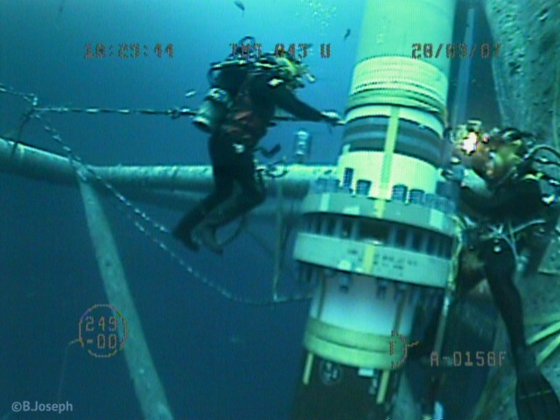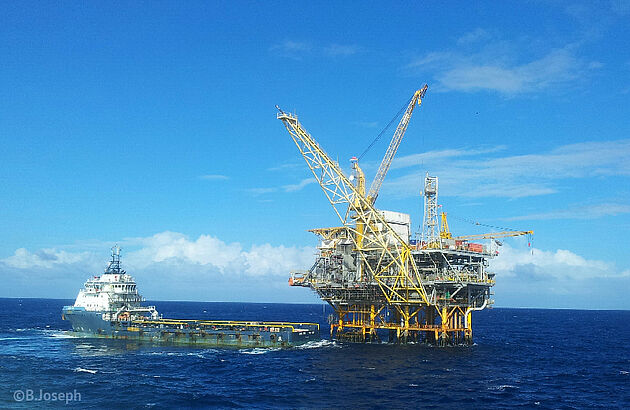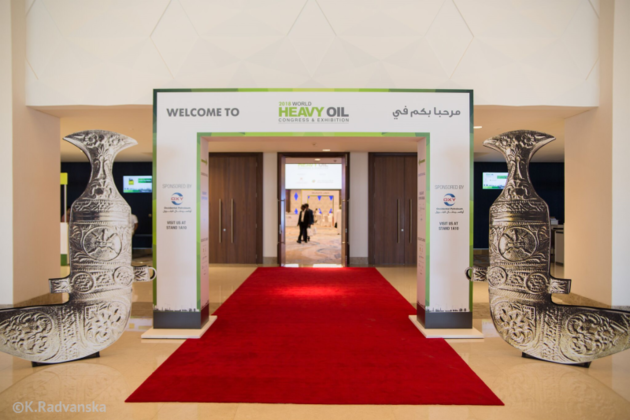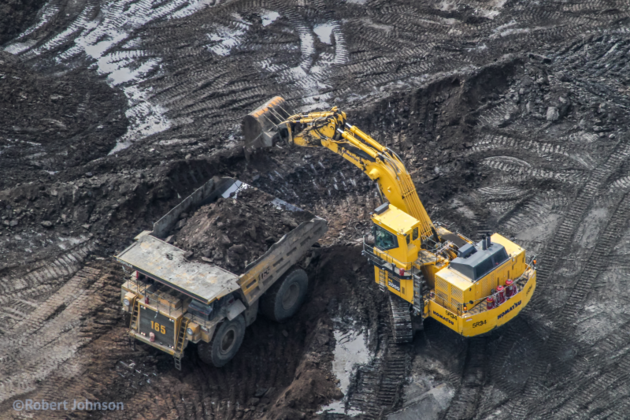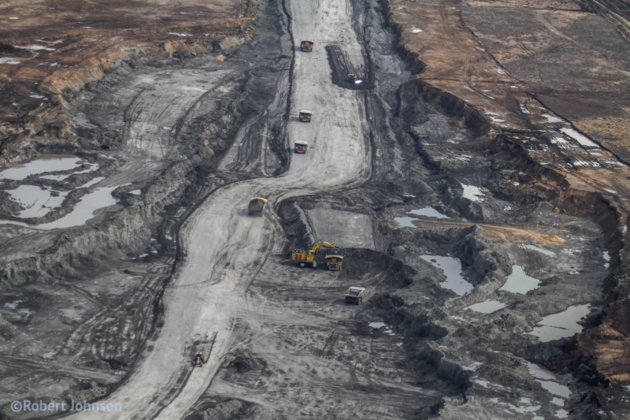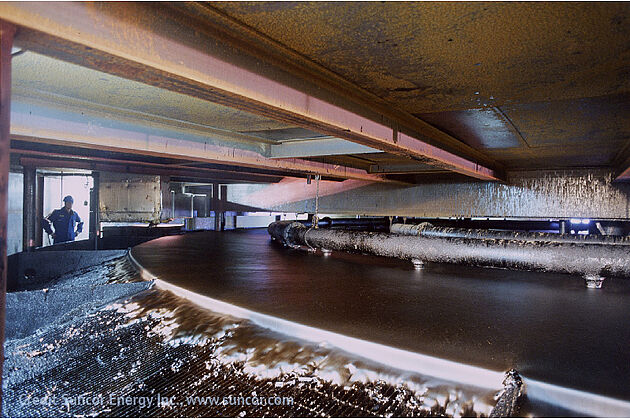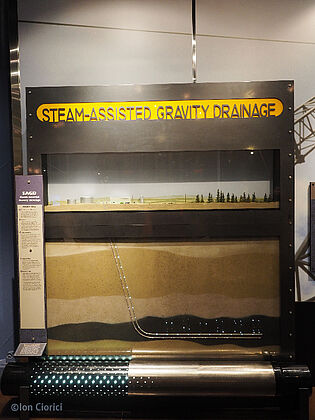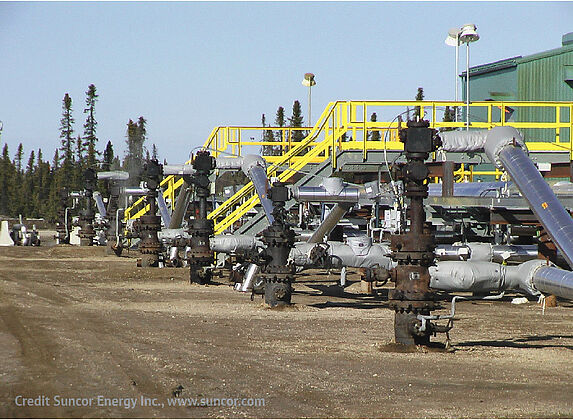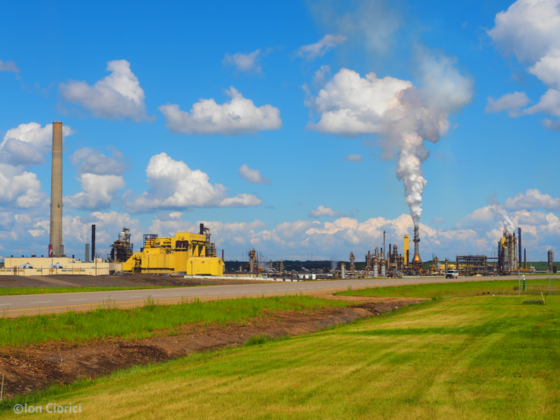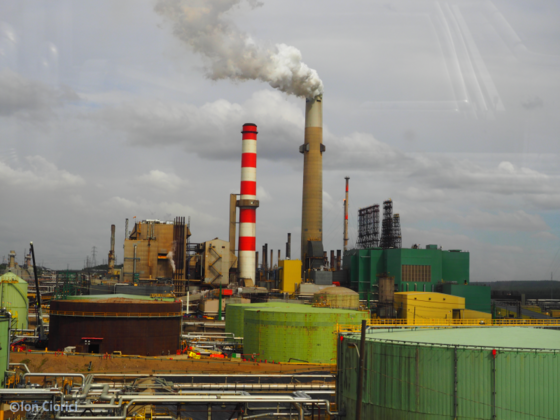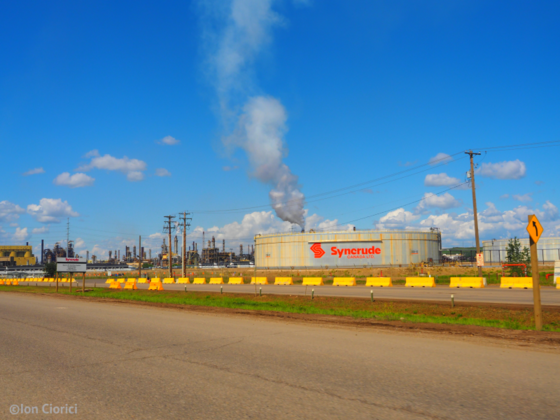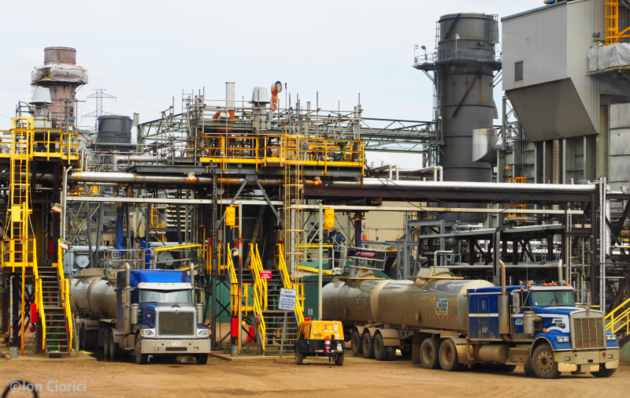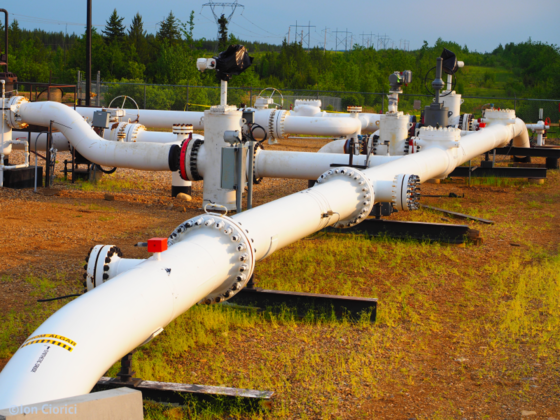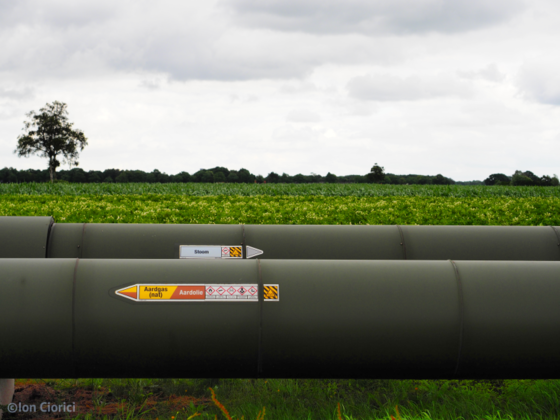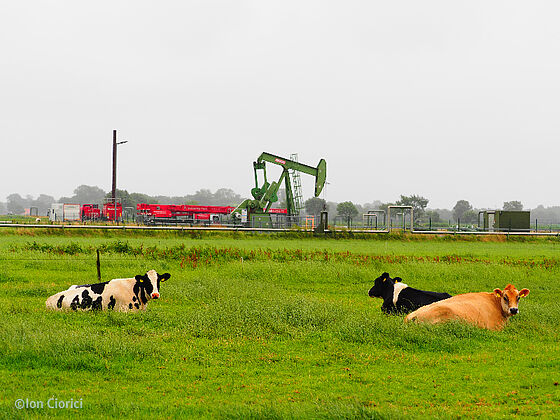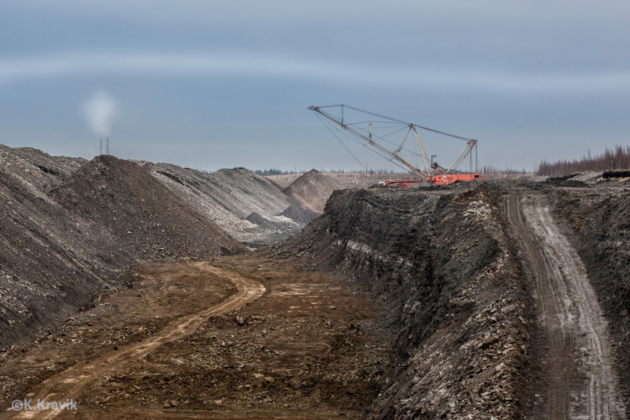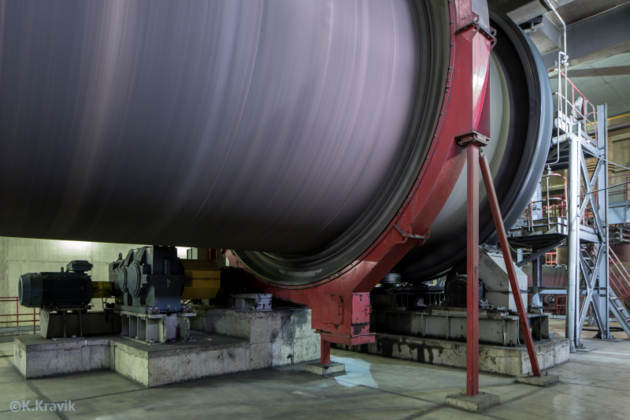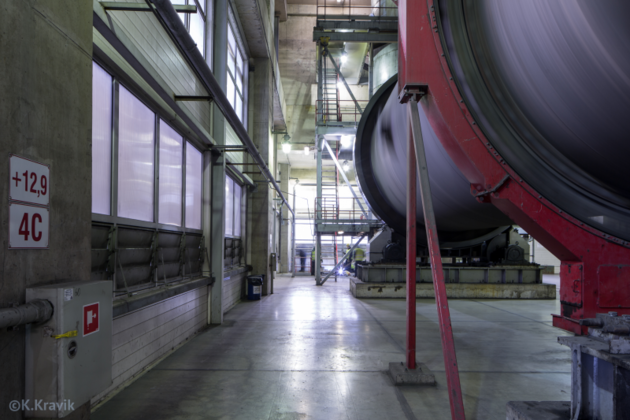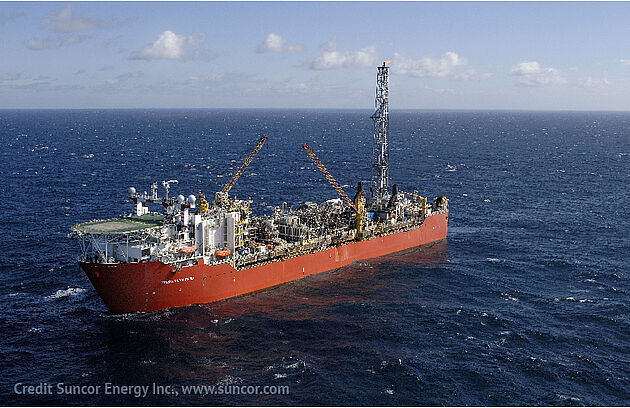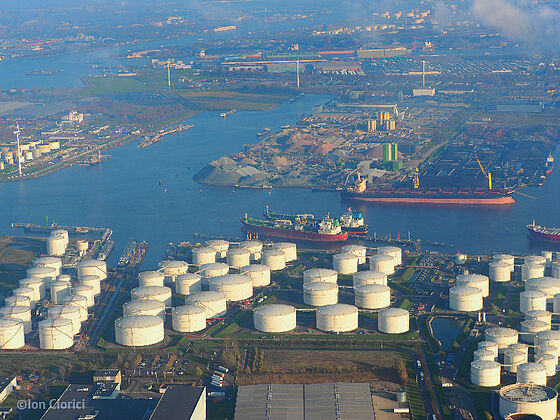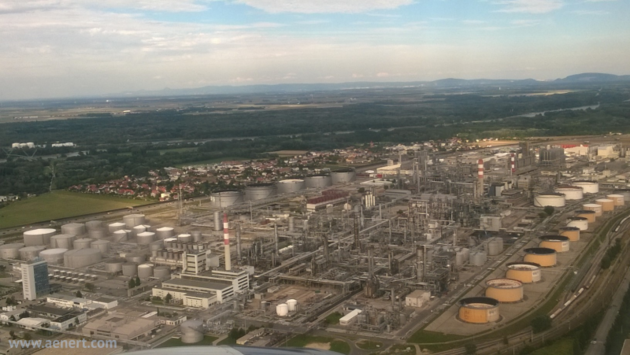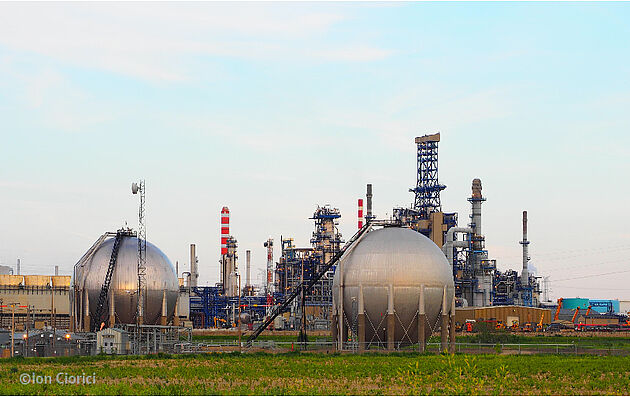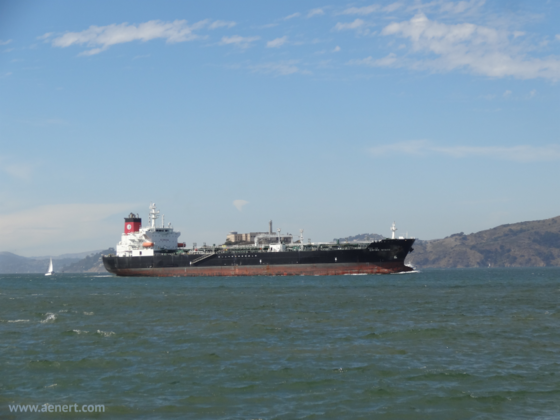Table of contents
Basic definitions
Naturally occurring oil is characterized by a number of fundamental properties, primarily density, viscosity, and the content of external elements or gas. In addition, natural reservoirs containing oil also differ from each other by location, depth of oil reservoirs, porosity and permeability of the rock, etc. As a result, the technological process of oil production presents a new task each time, which is determined by the properties of oil and the properties of reservoirs. Systematization of various types of oil, depending on these indicators, on the one hand, is quite simple, but on the other hand, has a lot of important nuances. Below is a diagram of the main types of oil according to the definitions of known and respected sources.
Source: Advanced Energy Technologies, based on [1-6]
First of all, all oils are conventionally divided into conventional and unconventional. The first group usually includes light low-viscosity oil with a density of at least 22 degrees API [1], the production of which has prevailed globally for many years, and has therefore become conventional. However, with the development of light oil deposits its reserves are quickly depleted. At the boundaries of geological basins as a result of natural influences, and also due to the use of aggressive technologies (water or gas flooding, chemical, thermochemical), the initial light oil loses its light-molecular-weight components and becomes a group of heavier oils [1], i.e. the type of oil may change in the course of development or involvement in the turnover of residual volumes from reservoirs. In addition, according to [2], unconventional oil should also include light oil in low-porous and low-permeability rocks (Tight Light oil or Shale oil). Thus, the label of traditional or unconventional is often determined not by the properties of oil and not by historical traditions, but by the specific methods of its production. In this sense, any hard-to-access but light oil (Hard-to-access light oil) can already be considered as unconventional. It is more difficult to determine the location in this hierarchy of heavy oil, which has a density below 22 degrees API and a viscosity of up to 100 centipoise [1]. Such oil is widely distributed in the world and has long been extracted along with light oil, and its production technologies are ubiquitous, i.e. this oil is essentially conventional. In addition, in some sources other boundary conditions appear for this type of oil. So in [7], oil with an API density of more than 20 degrees is referred to as conventional oil, and oil with a density between 10 and 20 degrees of API is considered heavy. In [8], other boundary conditions for heavy oil are indicated - a density in the range of 25–10 degrees API, and a viscosity of 10 to 100 cP.
Pumpjacks, Alberta, Canada
The definitions of the main types of unconventional oil, such as extra heavy oil and oil sands, are also not unanimous. For example, according to [1], extra-heavy oil refers to oil with a density lower than 10 API, and bituminous oil refers to one with a viscosity greater than 10,000 cP. On the other hand, in [8], the upper bound for extra-heavy oil was raised to 20 degrees API, at a viscosity of 100-10000 cP, and tar to 12 degrees API, at a viscosity of more than 10,000 cP. Another type of unconventional oil is formed by the so-called kerogen oil (Kerogen oil or Oil Shale), which is a solid substance of hydrocarbons. In [2], synthetic oil was also classified as unconventional oil as a result of coal, gas or biomass gasification followed by the conversion of syngas to liquid fuel by Fischer-Tropsch methods. Synthetic oil is also used for the processing of bituminous oil. To create complete confusion, it should be noted that these oils have low density and viscosity as their characteristics, i.e. are light. Based on the above data, it can be said that oil has many different types and several different interpretations. Intuitively, there is a big difference between light low-viscosity (conventional) oil and heavy high-viscosity (unconventional) oil. However, Tight Light oil, Hard-to-access conventional oil and Heavy oil form a group of intermediate oils, which can be considered in a number of ways to be both conventional and unconventional. These conclusions do not make sense if light oil resources were unlimited or the extraction of unconventional oil was not highly costly. However, as the reserves of light oil are exhausted, the assessment of the resources of unconventional oil in all its interpretations becomes important, since the level of applied technologies and the volume of required investments depend on this. Technically recoverable oil [1] includes conventional light, bituminous and heavy oils estimated at 953, 651 and 438 billion barrels, respectively. In [9, 10], the share of conventional oil was estimated at 30% of the total reserves, the share of heavy oil at 15%, and extra-heavy and bituminous oil together at 55%. If we take into account that in this case both hard-to-access and shale light oils are clearly attributed to the reserves of conventional light oil, then the concerns of oil companies regarding the assessment of real reserves and future development costs as new fields, which are increasingly difficult to access, become clear regions, at great depths or in shale rocks, and old, where the proportion of heavy oil is continuously increasing.
If you look at the graph of the growth of global reserves over the past twenty years [6], Fig. 2, you can see that the main growth has been due to unconventional resources.
Fig. 2. The growth of proven oil reserves over the past 20 years in the world
Source: BP Statistical Review of World Energy 2019
Thus, in 2008 it was determined that over the past decade, the main sprout — more than 63% — was provided by bituminous oil from Canada and heavy oil from Venezuela. At least another 15% due to heavy oil from Iran and hard-to-recover oil from Kazakhstan.
In 2018, growth compared to the previous decade increased by one and a half times, 55% fell again to Venezuela, 14% to the United States (mainly shale oil), and another 13% to heavy oil in other countries.
At the same time, according to estimates [11] in 2017, the total volume of explored hydrocarbon reserves decreased by about four times compared to 2012, with a shift in favour of gas to oil.
On the other hand, as follows from Fig. 3, the main increase in oil production over the past decade was provided by shale oil in the United States and bituminous oil in Canada.
Source: U.S. Energy Information Administration (March 2020) / www.eia.gov
This occurred against a backdrop of very strong fluctuations in oil prices (Fig. 4), indicating the stability and maturity of unconventional oil production technologies, which can seriously compete with conventional technologies despite their higher costs and technical difficulties.
Fig. 4. Change in oil production and Brent and WTI prices since 2001
Source: U.S. Energy Information Administration (March 2020) / www.eia.gov
Thus, as it currently stands, unconventional oil in the broad interpretation of this term is determining in the global oil market both in terms of resources and in terms of real production. Clearly, for the above reasons, that subsequently this situation will be exacerbated. Therefore, the development and improvement of technologies for the extraction of unconventional oil and hard-to-recover, shale and heavy oil is a fundamental condition for the stability of oil companies, and especially, their long-term development.
Unconventional oil resources
General issues of hydrocarbon resource management, basic concepts, including reserves, resources, prospective resources, and unrecoverable resources are described in detail in [12]. Resources and especially technically-affordable reserves of unconventional oil are the subject of numerous evaluations of practical importance.
Fundamental in this regard are the USGS estimates presented in [1]. Here, the technically recoverable resources of conventional oil in the world are valued at 952 BBO (billions of barrels), heavy oil at 434 BBO, and natural bitumen at 651 BBO. The most significant reserves of heavy oil are concentrated in South America (265.7 BBO), the Middle East (78.2 BBO) and North America (35.3 BBO). More than 80% of bituminous oil is in North America (530.9 BBO), with significant resources available in Africa, Asia and Russia.
The most detailed distribution of heavy and bituminous oil by geological basins of the world is described in [13]. In total, for heavy oil (average density 16.3 degrees API gravity, viscosity at 770F — 100.9 cP) 127 geological basins and about 1200 deposits, and for bituminous (average density gravity 5.4, viscosity at 770F — 1290254 cP) 50 basins and slightly more than 300 deposits, respectively. As noted by the authors, about 50% of the total original heavy oil in place lies in the “Continental interior multicycle basins: close collision zone at paleoplate margin”; 13.5% in the “Continental interior multicycle basins: open collision zone at paleoplate margin”; another 10% in "Continental rifted basins: median rift-faulted convergent margin". Most bituminous oil is found in “Continental multicycle basins, craton margin” and “Continental interior multicycle basins: close collision zone at paleoplate margin”. Arabian, Eastern Venezuela, Maracaibo (Venezuela), Campeche (Mexico), Bohai Gulf (China), Zagros (Iran), Campos (Brazil), West Siberia (Russia) are among the first Geological provinces with volumes of original heavy oil resources of more than 80 billion barrels (ranked by volumes of total original heavy oil in place. Two geological provinces — Western Canada Sedimentary and Eastern Venezuela, according to the source, have large Total original natural bitumen in place — more than 2 000 billion barrels each. Other provinces with volumes of more than 100 billion barrels are North Caspian, Volga-Ural and Maracaibo. As a result, the authors determined the Total original oil in place in the world of heavy oil in the amount of 3 396 billion barrels, and bituminous oil — 5505 billions barrels. Such massive resources, however, should not be misleading. We are talking exclusively about total original oil in place, not proven reserves. Nevertheless, with a recovery factor of 5%, which today does not seem unrealizable, these estimates demonstrate the enormous resource potential of unconventional oil.
Reserves of Extra-Heavy Oil and Natural Bitumen in the world as of 2008 were 59 and 243 billion barrels, respectively; calculated in [7]. This is based on the publication of R.F. Meyer, U.S. Geological Survey. The distribution of these reserves by countries of the world is presented in Fig. 5. In addition to Canada and Venezuela, which have very large reserves of bituminous and super-heavy oil, Kazakhstan and Russia also stand out.
Fig. 5. Distribution of reserves of Extra-Heavy Oil and Natural Bitumen by country
The regional distribution of estimated technically recoverable oil from heavy oil and natural bitumen reserves is given in [14]. More than 60% of the heavy oil reserves are concentrated in South America, 18% in the Middle East, and another 7-8% in North America and Asia. More than 80% of the reserves of technically recoverable bitumen are, according to the authors, in North America, the remaining significant volumes (more than 5%) are in Africa, Asia and Russia.
Fig. 6 shows the world interactive map of heavy and bituminous oil, as prepared by Advanced Energy Technologies, with about one and a half thousand fields. For each of them there is an extensive library of links to targeted sources of information that provide various information about the field, including the physical properties of oil, resources and reserves, properties of reservoirs, statistical and technological data on production, major companies, etc. As the main selection criterion, the upper value of the oil density at the fields was established - no more than 25 degrees API; therefore, some included in the map fields have oil that formally does not belong to the group of heavy oils and is classified as hard to access oil, hard to recover oil, and its production requires advanced technologies similar to those of heavy oil. An example of this is the Schoonebeek field in the Netherlands, where after many years of operation production was suspended due to low oil recovery and later restored due to the use of the latest technologies, primarily horizontal drilling and Steam Flooding. In total, the map shows the deposits of more than 50 countries, including about 100 US deposits, several dozen in Mexico and Canada, as well as separately about 30 in the Canadian province of Alberta. In South America, there are more than 250 deposits, including about 90 in Venezuela, about 40 in Colombia, about 60 in Ecuador, almost 30 in Brazil, and so on. In the countries of the Middle East, the deposits of Iraq, Iran, Saudi Arabia, Kuwait, Qatar, Oman and other countries of the region are given. Africa is best represented by deposits of Egypt, Angola and Nigeria. Extensive information is available for Russia (more than 130 deposits), China (more than 70), Kazakhstan (more than 50) and Indonesia (almost 35 deposits). In addition, many countries of Europe, Central America, the former USSR countries, India, Australia and others are represented.
The information on the map may be useful to specialists studying the resources and methods of producing unconventional oil, students and teachers, investors, journalists, and analysts.
More accurate information on oil reserves can be found in specialized publications, as well as in directories of statistics of countries and regions.For example, British Petroleum and the U.S. Energy Information Administration [6.15] annually update data on proven oil reserves in most countries of the world, which are used by many as the most preferred. However, there is no information on the types of oil. More detailed information on regions and types of oil can be found in the U.S. Geological Survey. So, in [16], this organization estimated the average volume of heavy technically recoverable oil in the Orinoco Oil Belt, the main oil province of Venezuela, at 513 billion barrels with a 50% probability and 380 billion barrels with a 95% probability. In [17] the U.S. Geological Survey declares that Total original natural bitumen in place in the United States has a volume of just over 54 billion barrels, with the largest, Ugnu Sands field in Alaska, containing 15 billion barrels.
The most detailed and annually updated data on the reserves of heavy and bituminous oil in the main oil province of Canada are given by the Alberta Energy Regulator [18]. According to the statistics of the Regulator, the remaining established reserves of natural bitumen in Alberta at the end of 2018 are 164 billion barrels, and about 24 billion barrels are in active development. Reserves of heavy oil in the province are 420.8 million barrels, and light-medium oil - about 1300 million barrels.
As noted above, a significant amount of heavy oil is concentrated in the Middle East. According to Reuters [19], about 60% of the recoverable oil reserves in this country are classified as heavy. In Iraq, the resources of heavy and super-heavy oil in place are estimated at almost 70 billion barrels, and more than 13 billion barrels of them are recoverable [20]. Kuwait has approximately the same reserves of heavy oil [21]. Most of the oil in Oman and Yemen is also heavy.
In Mexico, the ratio of oil reserves of heavy and light oil is 60/40 [22]. In the USA, mainly in California, resources of heavy oil in place amount to more than 43 billion barrels [23]. Petrobras estimates almost half of its proven reserves as heavy oil, which is about 6 billion barrels [24].
Russia possesses significant reserves of unconventional and hard to recover oil, and their share in production is steadily increasing. Reserves of heavy and highly viscous oil in the country exceed 16%; another 36% is accounted for oil in low permeability reservoirs [25]. Most of the first group is concentrated in Western Siberia, in the Volga region and in the north-west of the country (the Republic of Komi, Nenets okrug). The main share of natural bitumen is located in remote areas of the Krasnoyarsk Territory, as well as in the Republic of Tatarstan. According to the U.S. Geological Survey (USGS), Russia has over 13 billion barrels of technically recoverable heavy oil and over 33 billion barrels of bituminous oil [26].
The reserves of Tight Light oil in the world, which according to [2] are also classified as unconventional, are described in detail by the U.S. Energy Information Administration. The most complete set of data on the reserves of this type of oil in the world is presented in [3], as well as in subsequent issues of this organization. Fig. 7.1. presents this information as a world map, fig.7.2. as the United States' shale basins.
Fig. 7.1. Technically recoverable reserves of shale oil in the world
About 22% of the world's reserves or 75 billion barrels of Tight Light oil are located in Russia in Western Siberia (Bazhenov Shale). The USA (48 BBO), China (32 BBO) and other countries also have significant reserves. Industrial production of shale oil in the United States has helped them to become leaders in world oil production.
Fig. 7.2. The United States of America's shale oil basins
Source: Based on U.S. Energy Information Administration![]() USA_shale_tight_-oil_map.pdf [224 kB]
USA_shale_tight_-oil_map.pdf [224 kB]
Another type of unconventional oil is of great interest due to its colossal reserves. In this case we are talking about oil shale or kerogen oil, which should not be confused with shale oil. Basic information about the resources of this oil is presented in the USGS publications [5]. Unlike other types of oils considered here, there is a unique case where more than 75% of the resources are concentrated in one country — the United States. Moreover, the main part of this resource in the USA is in the Green River Formation at the junction of the states of Wyoming, Colorado and Utah. Oil production from oil shale is technically feasible, however in most cases it is not economically feasible due to the high energy costs. Basic information about kerogen oil resources and industrial projects is presented in Fig. 8.
In addition to the United States, China, Russia, the Democratic Republic of the Congo, Brazil, Italy, and Morocco have significant volumes of kerogen oil — over 50 billion barrels of oil in place.
Mainstream technologies
The extraction of unconventional oil, as its name implies, differs from the production of traditional light oil. This is due both to the physical and chemical properties of the oil itself and to the characteristics of the fields. In practice, these indicators are inextricable, very diverse, and often go beyond the classifications in their meanings. Therefore, many technologies are applicable to both traditional and unconventional oil. Technologies with a unique affiliation are present only at the extreme poles of this hierarchy. For example, it is difficult to imagine that expensive thermal methods will be used to produce light, low-viscosity oil in reservoirs with good permeability. On the other hand, it is impossible to produce bituminous oil by simply increasing the pressure in the reservoir, which is, however, widely used for the extraction of traditional oil. The methods of oil production historically used today are conventionally divided into three large groups — Primary recovery, Secondary recovery and Tertiary recovery. The first group includes production methods based on prevailing environmental conditions — pressure in the reservoir and ambient temperature. If the pressure in the reservoir is not enough to extract oil, pumps of various designs are used, through which oil is delivered to the surface. Moreover, the oil recovery coefficient can reach 15% for light types of oil and up to 10% for heavy types [27]. With secondary extraction methods, increased production is ensured by the creation of additional pressure from external sources. For this purpose, various gases, water, air or other chemicals are selected as the transmission medium. The oil recovery coefficient can reach 30% [27]. Tertiary methods, often called enhanced oil recovery, are the most effective, but also the most expensive and technologically sophisticated. Some of them belong to the category of thermal methods, others to non-thermal or chemical methods. Combined options are also used. In some cases, the oil recovery coefficient by these methods reaches 60%.
For tight light oil production, the directional drilling and hydraulic fracturing method is described in detail in the Unconventional gas section.
Cold Production of heavy oil and oil sands
For the extraction of heavy oil, all of the above recovery methods are used. Among the primary methods, the method of extraction of heavy and extra-heavy oil with sand (CHOPS) is widely used (primarily due to its low cost), despite the small recovery coefficient of up to 15% [28]. Actually, the production of oil mixed with sand is carried out by means of screw pumps, more often than a cavitation screw pump. As a result of deliberate aggressive action on the reservoir, as sand is extracted, long channels of increased permeability of several tens of meters are formed in it, facilitating the movement of oil. However, such a configuration of the reservoir can change quite quickly due to blockage of channels, flooding or exit of channels outside the formation. In this regard, this method is mainly used for unconsolidated sand reservoirs [29], which have a low content of fine fractions, and for oil with a low gas content. CHOPS has gained significant distribution in Canada, Venezuela, Kuwait and other countries [28]. Another primary method for producing heavy oil, but without the use of sand, is through horizontal wells completed with slotted liners. The relative success of this technology, called Cold Production (CP), is achieved through the operation of a large development area. Of course, in this case there are restrictions on the viscosity of oil [30]. The advantages of these non-thermal production methods are low capital and operating costs (2 to 4 US$/bbl), lack of carbon dioxide emissions [31], and technological availability. The main disadvantages are the poor recovery factors, the method is not suitable for oil sands and it is not effective for reservoirs with active aquifer [31]. Detailed information on other non-thermal methods, including those used for the extraction of heavy oil, are presented in [32–34].
Primary oil production methods also include surface mining of oil sands and oil shale, which are the raw materials for subsequent oil production. The general scheme of surface mining is shown in Fig. 9. This method is used when the depth of oil sands is not deeper than 75-80 meters. Oil sands mainly consist of a mixture of quartz sand, clay, water and bitumen, and the actual oil in them is not more than 15%. Oil production from oil sands along the longest production chain is carried out in three stages - the extraction of tar sand in an open way using heavy quarry techniques; recovering bitumen from tar sand; and finally, upgrading the recovered bitumen to a grade oil suitable for refining called synthetic crude oil. Sometimes upgrading operations are not carried out.
Fig. 9. Bitumen extraction scheme from the oil sands
1. Oil rich bitumen sands layer 2. Open pit surface mining using heavy pit technics 3. Primary crusher and dosation before transportation 4. Conveyor transportation line 5. Secondary crusher and separation 6. Slurry preparation tower (mixing with water) 7. Pipeline transportation 8. Rotating drums for ore size reduction and mixing with water 9. Primary separation cell separates bitumen sands and water 10. Diluent for transportation needs 11. Tailing pond for used working water
To extract bitumen, the bituminous ore delivered from the quarries is crushed, washed, and primary mechanical separation is carried out. Then the resulting mass is poured with hot water and sodium hydroxide and separated into components due to flotation processes. As a result of these operations, the bulk of bitumen is released from the original tar sand [35]. Production waste is returned to the mine for disposal, after which soil revegetation is carried out. Next, bitumen is subjected to upgrading and purification, as a result of which the viscosity of the finished product is many times reduced due to the separation of heavy fractions; it reduces the content of sulfur, gases and heavy metals. The final product, synthetic oil, is then transported to refineries. For enrichment, traditional vacuum distillation, cracking and hydrotreating technologies are used (Fig. 10-13).
Fig. 10-11. Alberta oil sands. Surface mining (left) and bitumen extraction Plant (right).
Currently, about 50% of bituminous oil production in Alberta in Canada is surface mining, and these technologies can extract up to 100% bitumen [35]. The largest producers of tar sands in Canada are Syncrude Canada Ltd, Suncor Energy Inc., Canadian Natural Upgrading Limited, Canadian Natural Resources Limited and Imperial Oil Resources Limited. Each of these companies produces more than 100 million tons of tar sand and more than 10 million cubic meters of crude bitumen. Crude bitumen is converted to synthetic oil at six large specialized Alberta refineries, the largest of which are Suncor Upgrader and Mildred Lake-Syncrude Canada Ltd., each with a capacity of 350,000 bbl / day. The main infrastructural characteristics of bituminous oil production in Alberta in Canada are shown in Fig. 14.
The Oil Sands East Mine, Syncrude, Alberta, Canada
Enhanced oil recovery
Tertiary recovery, which includes Enhanced oil recovery (EOR) methods, is most suitable for the production of heavy oil and is indispensable for the effective extraction of extra heavy oil and oil sands. The definition of Enhanced oil recovery in the Schlumberger dictionary [29] includes the following main indicator — the use of advanced technologies to increase the level of oil recovery from fields that cannot be achieved based solely on primary and secondary methods of production. These include, first of all, the technologies of restoring formation pressure, improving flow oil displacement. A brief description of Enhanced oil recovery technologies can be seen, for example, in [36-37]; more comprehensive reviews are presented in [31, 34, 38-41]. A detailed analysis of the technical aspects of the technologies used is widely presented on the websites of the most advanced specialized service companies in this area —Halliburton and Schlumberger. In compressed form, this information can be obtained in [34, 42]. The most complete statistical information on EOR projects in the world is collected and systematized by the Oil & Gas Journal; see for example, one of the issues in [43]. A recent publication by the International Energy Agency with detailed statistics is also devoted to this topic [44].
Currently available EOR methods can be divided into four groups - thermal method, gas injection, chemical methods and others [39]. Thermal methods primarily include hot water injection methods, continuous (steam flood) or cyclic steam injection (in particular — Cyclic Steam Stimulation (CSS), alternating water and steam injection, in-situ combustion, air injection combined with combustion (for example, THAI — Toe to Heel air Injection), etc. The most popular EOR thermal methods is Steam Assisted gravity drainage (SAGD) method. Various hydrocarbons are used for gas flooding, for example ethane, propane, nitrogen or carbon dioxide. Chemical methods involve solvent injection, the molecules of which are diffused into oil leading to a reduction in its viscosity. An example of this technology is the VAPEX (Vapor-Assisted Petroleum Extraction) method. Among other methods, it is necessary to mention Microbial Enhanced Oil Recovery where the intensification of production is achieved by introducing a special group of microbes into the reservoir.
In general terms, the choice of a particular technology is determined by the viscosity of the oil, the depth of the beds, the type of rock, permeability, etc. and of course economic indicators. Most gas injection methods are suitable for oil viscosities of less than 100 cP, but are applicable for large depths and various rock properties (sandstone, carbonate) [40]. However, gas injection, excluding associated gas, requires expensive delivery to the field. This also applies to carbon dioxide [34], which is a promising resource in various projects with the technology of its utilization, especially in connection with climate change. On the other hand, thermal methods, in particular SAGD, are used at high and very high viscosity of oil, reaching 100,000 cP, as well as in homogeneous rocks, but at a relatively shallow depth, usually no more than 1000-1200 meters. For obvious reasons, the operational costs of technology increase with the transition from non-thermal to thermal methods [31]. Thermal methods are also a source of higher CO2 emissions [31]. The variety of EOR methods is also dictated by environmental conditions in the fields. For example, the production of heavy oil in arctic latitudes under permafrost conditions significantly limits the possibilities of thermal production methods [45]. Similar barriers exist for reservoirs with thin layers or at depths of more than 1000 meters [32, 33]. Some EOR technologies are long-proven and industrially developed technologies, for example, SAGD, CSS, Steam flood, Gas Flooding, and others, such as Microbial, are under research and development.
According to [44], the share of EOR thermal projects is a little more than 30%, CO2-EOR - more than 44%, and chemical - about 10%. The total oil production by EOR methods in this publication is estimated at 2% of the global total. However, extra heavy oil and oil sand mining projects, (where tertiary methods are prevailing) were not included in this report. The authors predict the growth of EOR methods in a fairly restrained framework. For example, between 2015 and 2040, the growth for thermal methods is assumed to be within 65%. The main reason for this is high capital costs and a long payback period for projects; therefore, at present most EOR projects rely on government support. Also, fluctuations in world oil prices do not contribute to the large-scale growth in the application of EOR methods, as well as the intensive development of competitive technologies, for example, shale or offshore [44]. However, the authors associate the main reason with resource issues.
EOR methods will inevitably be applied where significant negative changes in the resource base (reducing the share of light oil, the need to increase the recovery rate, etc.) have happened or where hard oil recovery resources form the basis of the country's or regional oil reserves. Despite the abundance of various technological options for EOR, thermal methods have a dominant representation, especially for the efficient production of extra heavy oil and oil sands in-situ, for example, this is clearly seen from the data in Fig. 14.
Cyclic steam injection (Huff & Puff) is one of the few technologies that has received relatively wide industrial acceptance, and many years of recognition. At the first stage, steam is injected into the reservoir to reduce the viscosity of the oil, then after prolonged exposure, oil is extracted. The cycles are repeated many times.
Thermal stimulation is limited by the near-well region of a reservoir [34], which requires the availability of adequate sufficient number of wells for field development. Operating costs range from 4 to 5 dollars per barrel [31]. The method has a low recovery factor, significant energy consumption and water consumption, a high level of carbon dioxide emissions. Nevertheless, this method is not technically complicated and it can be used as a starting technology with the subsequent transition to other EOR options. The development of Cyclic steam injection began more than 50 years ago in Canada, Russia, the USA and Venezuela (Fig. 17-18). The method was also used in resuscitation of the Schoonebeek oil field in Netherlands, as well as in Brazil, Trinidad and Tobago, Indonesia and China [41,43,46].
In-situ combustion is also intended for thermal stimulation of an oil reservoir; however, it is fundamentally different from steam methods. Here, an increase in the temperature of the formation is ensured by partial burning of heavy fractions in oil. In a given zone of the formation, a combustion chamber is initiated, for example, by means of electric heaters, then air is pumped into the formation; this results in oxidative reactions with the release of a large amount of heat. The combustion front propagating along the formation heats the oil to high temperatures (up to 600 -700oС) with the formation of combustion products - carbon dioxide, hydrocarbon gases, steam, which increase the pressure in the formation, which, while reducing the viscosity of the oil, creates favourable conditions for its extraction. Sometimes, together with air, water is additionally supplied to the combustion zone to intensify thermodynamic processes. An important advantage of this technology is that it eliminates the need for a steam generation complex, which is a significant factor in remote fields [41]. In addition, thermal cracking reactions occur as a result of active oxidative action, i.e. in-situ upgrading occurs [31]. Despite the fact that this technology has been known for more than 50 years and allows to implement a very high recovery factor up to 60%, it is not widely used. The main reason for this is the small number of successes and operational and safety problems [31]. Several projects for the case of heavy oil have been tested in Canada, Romania, India, USA, Venezuela and Trinidad and Tobago [43,46,47].
Steam Assisted gravity drainage, which is widely used in the world, is often recognized as the most effective thermal method of EOR. The principle of operation of the SAGD method and the image of technological equipment at one of the facilities of Credit Suncor Energy Inc. are presented in Fig. 19-20.
Fig. 19-20. Steam Assisted gravity drainage. Left - SAGD flow chart; right - Firebag SAGD well pad (Credit Suncor Energy Inc., www.suncor.com).
The basic version of SAGD involves the drilling of two deviated wells at a depth of 100 meters inside the oil reservoir, with a length of up to 1000 meters. Each of the wells is drilled one above the other at an average distance of 5 meters from each other [31]. The upper well is conditionally called injector, the lower — producer. Often, the reservoir is preheated initially for several weeks or even months by supplying steam to both wells. During this period, a steam chamber is formed in the formation, which covers both wells. Then, at the extraction stage, steam is supplied only to the upper well. As a result of intense heat transfer and mass transfer oil fluidized by heat drains under the influence of gravity and thermal expansion to the producing well. A less dense associated gas replaces the flowing oil and form heat-insulating barriers in the upper part of the vapor chamber [48]. This method can produce an oil recovery rate of up to 60%, and with related factors, even higher. Among the other advantages of this method is the high speed of the process, since it is based on relatively fast heat transfer processes, the maturity of the technology, and the ability to extract oil from super-viscous tar rocks. However, on the other hand, SAGD is one of the most technologically-sophisticated methods, primarily because of the need to use technology adapted to high temperatures, strict adherence to all technological parameters, and detailed preliminary research of reservoirs. Among other disadvantages is the huge energy demand — 1500MW for 100,000 bopd, very high water consumption and significant emissions of carbon dioxide into the atmosphere [31]. In [49], the break-even price of SAGD technology is determined at the level of 30-35 US dollars per barrel. The SAGD method has become widespread in the world, especially in Canada, where it has become the main one for in-situ extraction of bituminous oil (Fig. 15). More detailed information on the application of the SAGD method can be obtained in [43,46].
Recently, combined oil production technologies using solar energy concentration plants for steam production in combination with EOR have gained a worthy development (Fig. 21-22). Of course, this method has limited distribution, since its use is only possible in regions with high solar activity.
Fig. 21-22. Left — Solar thermal enhanced oil recovery, scheme. Right — Thermal Solar project at McKittrick oil field California, USA, 2011-2016.

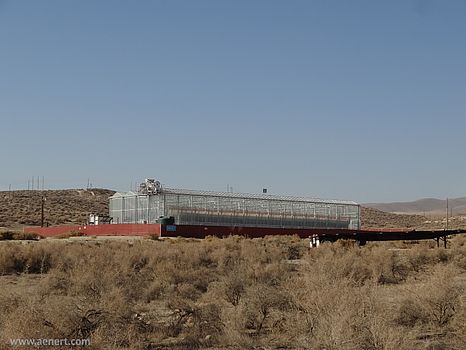
1. Solar power tower; 2. Solar mirrors; 3. Heat exchanger; 4. Injection well; 5. Extraction well; 6. Oil water separation system; 7. Oil tank
However, the absence of greenhouse gas emissions and significant savings in natural gas, as the main natural resource for steam production using conventional EOR thermal technologies, make this process very attractive. Initial pilot projects for concentrating solar energy were implemented in the United States in 2011 at the Coalinga and McKittrick oil fields in California. In the first case, Chevron Technology Ventures and BrightSource built a 29 MW tower-type solar installation, which for several years fully met the needs of the field in the production of industrial steam [50]. In the second case, Berry Petroleum and GlassPoint launched a similar project with a capacity of 300KW, using parabolic trough technology to concentrate solar energy [51]. In this configuration, paraboloids were placed in a glass block, which greatly simplified maintenance; in addition, they were made of aluminium and not expensive mirrors as in standard installations for concentrating solar energy to generate electricity. A little later in 2013, GlassPoint launched another project in collaboration with Shell at the Amal West oil field in Oman [52]. Currently, the construction of a new Miraah station with unique characteristics is underway — a capacity of 1021 MW, steam generation — up to 6000 tons per day, which will save 5.6 trillion Btus / year of natural gas and avoid 300,000 tons per year of carbon dioxide emissions. The complex will consist of 36 blocks, each of which can be commissioned immediately after completion of construction, i.e. an economical phased construction system is being implemented. The total station area under the project occupies a huge territory equivalent to more than 360 football pitches [51,52].
The main methods for the production of heavy and bituminous oil are presented in Table 1. For EOR technologies, as well as the experience of using EOR in various regions, see [53-60].
Table 1. The main methods for the extraction of heavy and bituminous oil
Oil shale processing
Oil shale is one of the varieties of unconventional oil resources. It was previously noted that the natural resources of oil shale are mainly concentrated in the United States [5,7]. Nevertheless, many countries also have substantial reserves of this resource and are considering various options for its commercial development. A list of some projects and technologies for processing shale to produce useful products is presented in Fig. 9.
Oil shale is one of the most complex oil-containing substances in terms of extracting organic compounds from it. As follows from [61], the ratio of organic to mineral in shale is 15–30%. In addition, the fractional presence in the organic residue of other elements — carbon, hydrogen, and oxygen — is important. Most oil shales have low solubility in organic solvents; therefore, the main technological method for extracting useful organic compounds from them is thermal decomposition, which determines the high cost of extraction processes. Technically, these technologies do not cause fundamental problems, since their implementation is fully consistent with the current level of technology. However, their economic feasibility is balanced at the utmost level, depending on the current situation in the energy market. Nevertheless, in some countries the processing of oil shales into useful energy products has received industrial recognition, and has commercial applications. Historical aspects of understanding the nature of oil shales, their use and development of infrastructure are described in [61, 62], and a list of research projects of leading US laboratories is presented in [63].
To extract kerogen from shale, two fundamentally different methods are used - ground processing (ex-situ) or surface retorting, and underground retorting (in-situ). In the first case, shale is mined in special quarries or in shallow mines (Fig. 23-24). After crushing, pyrolysis of shale rock is carried out in special retorts in a controlled atmosphere in the absence of oxygen.
As a result of thermal exposure, kerogen evaporates and then condenses in the cooled zone of the retort. Process temperature reaches 535oС [64]. To heat the rock both external sources and internal sources are used, for example, coal. To save energy, the heat of the mineral residue after the previous pyrolysis process and the gas released during pyrolysis are also used [65]. In addition, the thermal dissolution method, widely known as the process of direct liquefaction of coal, as well as hydrogenation methods [66], can be used to extract the oil component from shale. However, both processes require the use of hydrogen, which leads to a significant increase in the cost of the finished product and limits their economic feasibility.
Special vertical retorts are developed for internal combustion. The rock is loaded into the upper part of the retort, and components for combustion are supplied to the lower part. Decomposed kerogen in the form of shale oil mist is removed through the upper part of the retort. The main advantage of this process is that it is thermally efficient; the disadvantages are restrictions on the size of the rock and contamination of kerogen with combustion products. This process has received industrial application in Brazil (PetroSIX, Irati Energy Papanduva Oil Shale Plant), China (Fushun MG), Estonia (Kivioli & Kohtla-Jarve Oil Shale Plants, Kiviter process) and some other countries (Fig. 9). According to [67] several businesses involved in the commercial extraction of oil from oil shales involving vertical (Fushun) retorting technologies operate in five provinces of China. The oil content in the shale ranges from 6 to 12%. Two plants in Fushun annually process about 10 million tons of oil shale and extract 350 thousand tons of oil shale [67]. Petrobras’s Shale Industrialization Unit (SIX) in southern Brazil produces 5,880 tons per day of fuel oil, liquefied gas, sulfur and other by-products [68].
To use external heat sources, horizontal rotating kiln retorts with fluidized bed are used (Fig. 25-26). The crushed and pre-dried oil shale rock is mixed in a retort with hot ash, which is a product of spent oil shale.
Most often, hot ash is produced in separate kilns (Galoter process); however, in the Alberta Taciuk Processor (ATR) all technological operations are performed in one horizontal multi-chamber retort [69]. Using TOSCO II technology, shale rock in a retort is mixed with hot ceramic particles with temperature up to 870oС [65]. This technological configuration allows the production of kerogen oil and associated gases not contaminated with combustion products, as in processes with vertical retorts. In addition, it is possible to use finely ground rock. Several large operating oil shale processing enterprises are located in Estonia. The Enefit 280 complex, including combined oil, power and gas generation plant [70] processes 280 million tons of shale rock annually and produces 1.9 million barrels of shale oil with a density of 21.3 degrees API gravity. More detailed information about these and other projects can be seen in [71, 72].
Underground retorting or an in-situ process for the extraction of kerogen oil is initially reminiscent of EOR thermal processes for the extraction of bituminous oil. The general principle of production involves drilling of production and heating wells and subsequent extraction of oil with special pumps (Fig. 27). One of the variants of this technology was proposed by Shell and is an in-situ retorting using downhole electric heaters and a freeze wall [73-75]. The heating process is carried out for several years (2-4 years) by means of electric heaters. To eliminate groundwater contamination during the production process injection wells are additionally placed around the production zone to supply refrigerant.
Fig. 27-28. Left – in-Situ Conversion Process, right – Upgrading and Refining unconventional oil
During field trials Shell drilled more than 150 injection wells at 2.4 meter intervals. The method ensures uniform heating of the formation to a temperature of 340oС to obtain oil with 25-40 degrees API gravity [73]. The technology was tested in Colorado and at some other sites.
Another option for the extraction of kerogen oil was proposed by Exxon Mobil and was named Electofrac. The essence of the method consists of drilling a number of horizontal wells in the production zone, followed by hydraulic fracturing and filling with electrically conductive proppant made of calcined coke [73]. Then the formation is heated for several months by passing an electric current through it.
Chevron has developed its own process, called the Chevron in-situ process. The formation heating in this process is provided by the injection of heated natural gas or carbon dioxide into it [75]. Also, according to this technology, numerous groundwater monitoring wells are drilled around the perimeter of the production zone. Oil is produced through the production wells.
As can be seen from the description of the above projects, they all have a significant duration, the need to drill a large number of wells, and the additional use of exclusive operations. Of course, this leads to a rise in the cost of the process. According to the information given in [65], the energy output in the form of kerogen oil is estimated to be approximately 1.5 times greater than the energy costs of the process using the Shell option. More optimistic estimates of the company itself give a value of 3.5. Nevertheless, despite the fact that the in-situ process of extracting kerogen oil is more energy-efficient and environmentally-friendly compared to ex-situ technologies they have not yet received industrial application, in contrast to surface-retorting methods.
In the vast majority of cases, unconventional oil produced using the above technologies is the feedstock for the oil refining industry (Fig. 28), which, along with transportation standards, determines the requirements for production processes and primary upgrading of unconventional oil. Perhaps the creation of specialized integrated oil refineries for the processing of exclusively unconventional oil will ease the economic pressure on its production processes and increase the overall efficiency of the production of final products.
Research and innovations
Patent innovations and scientific research in the field of unconventional oil production technologies have attracted the attention of inventors and researchers in many countries of the world. To assess the current trends in engineering and research practice in this direction a collection of patent applications and research publications for the last ten years from 2010 to 2019 was prepared. Patent applications were selected from the public databases of Google Patents, Lens, WIPO and others. The research methodology can be found on the Advanced Energy Technologies website in the Research and Analysis section. A total of 17029 patent applications were selected, registered in 52 patent offices around the world and submitted by 3817 applicants from 63 countries. For the collection of scientific publications as a result of an end-to-end search using the simplest keywords from the Google Scholar database, 6,864 research papers were selected, published by 2,671 authors from 92 countries in various online editions. Online links to all selected articles can be found in the library on the Advanced Energy Technologies website.
The distribution of patent applications among the patent offices of the world is shown in Fig. 29, and research publications among the leading online publications in Fig. 30. The largest number of patent applications were filed with the US Patent Office — a little over 23%. In the following three offices, more than 10% of the total number of applications were accepted, including CIPO (Canada), WIPO, CNIPA (China). The top 10 most popular offices also included EPO, IP Australia, INPI (Brazil), IMPI (Mexico), Rospatent and JPO (Japan). Almost 13% of applications were registered in 42 other offices.
Fig. 29-30. Distribution of patent applications among patent offices of the world (left) and scientific publications among leading online systems (right), %
Source: Advanced Energy Technologies
OnePetro from The Society of Petroleum Engineers, Science Direct from Elsevier's online systems, and CNKI's China-based online scientific publication library were the most popular among the authors of scientific publication. The category under the general name "Google" includes publications that do not belong to specialized online publications, including those published in an independent format. Among the most productive online publications during this period were: Journal of Petroleum Science and Engineering, as well as Fuel (ScienceDirect); Energy Fuels (ACS Publications); Journal of Canadian Petroleum Technology and SPE Journal (OnePetro); Petroleum Science and Technology (Taylor & Francis Online); The Canadian Journal of Chemical Engineering (Wiley Online Library); Environmental Science & Technology (ACS Publications); Petrochemical Industry Technology (CNKI).
Figures 31 and 32 show the top 10 countries whose residents registered the largest number of patent applications and were more productive in the number of their research works. Inventors from the United States for the past ten years without any competition dominated the registries of patent applicants related to the extraction of unconventional oil. Over 13% of applications were registered by residents of Canada. The next group of applicants, whose number of applications was in the range of 4-6% of their total, included the Netherlands, China and Germany. Almost 7.5% of applications were filed by residents of countries outside the top 10.
Fig. 31-32. The number of patent applications and scientific publications filed by residents of the countries of the world. Patent applications on the left, scientific publications on the right, %.
Source: Advanced Energy Technologies
The authors of research publications in the survey were primarily residents of China (31.1% of the total number of publications), Canada (25.5%) and the United States (12.7%).
In a significant part of patent applications, inventors proposed patent solutions related to the production of bituminous oil (oil sands) — more than 35%. Almost 25% of the applications proposed solutions of a general nature, or the drafters were not able to identify the raw materials belonging to the technology (Fig. 33). In the research publications, in more than 40% of cases, the authors mentioned technologies associated with the extraction of heavy oil (Fig. 34).
Fig. 33-34. The most popular types of unconventional oil among the authors of patent applications (left) and scientific articles (right), %
Source: Advanced Energy Technologies
HO — Heavy and extra heavy oil; OSH — Oil shale; OSN— Oil sands; UGT — Unspecified or general technologies
An assessment of the interests of inventors and researchers in the technological problems of the extraction of unconventional oil is of practical importance. As follows from Fig. 35-36 in both cases, the majority of publications were devoted to the problems of Low efficiency of primary production, especially in the case of scientific publications. For patent applications, a significant number of references were also related to the issues of Low efficiency of secondary processing; High running costs of repair and replacement; High running costs of maintenance; High capital or running costs in general; Energy, gas or water consumption and Environmental balance and protection.
Fig. 35 - 36. Problems addressed in patent applications (left) and scientific publications (right), %
Source: Advanced Energy Technologies
LEPP — Low efficiency of primary production; LESP — Low efficiency of secondary processing; EXP— Exploration problems; LPE — Low production efficiency in general; HCEI — High capital costs of exploration and infrastructure; HCCP — High capital costs of component production; HCRR — High running costs of repair and replacement; HRCM — High running costs of maintenance; HCG — High capital or running costs in general; EGWC — Energy, gas or water consumption; EBP — Environmental balance and protection; AOP— Administrative and organisational problems; UP — Unclear problem
In scientific publications, authors also often addressed the issues of Exploration problems, Low production efficiency in general, Environmental balance and protection.
Such technological operations as Reservoir permeability improvement and extraction, Steam injection, Gas injection or water flooding and Chemical stimulation were mentioned in approximately the same proportion in patent applications and research papers - Fig. 37-38.
Fig. 37 - 38. The most popular technological processes among the authors of patent applications (left) and scientific articles (right), %
Source: Advanced Energy Technologies
CS — Chemical stimulation; D — Drilling and well elements; DDH — Directional drilling or hydraulic fracturing; GWF — Gas injection or water flooding; ISC — In-situ combustion; ME — Mechanical extraction; OU — Other unclassified; RPIE — Reservoir permeability improvement and extraction; SEI — Surface exploration and infrastructure; STI — Steam injection; SUM — Surface or underground mining; TR — Treatment and refinement; UAM — Undefined activation method; URE — Underground reservoir exploration; UTR — Uncommon thermal recovery; WP — Waste processing
In addition, inventors often turned to technological operations such as Treatment and refinement, and authors of scientific publications to Underground reservoir exploration.
Table 2 provides information on the top 10 applicants who have registered the largest number of patent applications over the past decade on topics related to the extraction of unconventional oil. The industry leaders in the services offered are Halliburton Energy Services and the leader among the world's oil producing companies, Inc. ExxonMobil Upstream Research Company, has topped this list. Both of them has registered more than 1000 patent applications. Among other companies here you can see one representative from the Netherlands, Saudi Arabia, Germany and China. American companies dominate the list - six out of ten positions.
Table 2. Top 10 Applicants by Number of Registered Patent Applications
| Status | Country | Name | Average rating | Total 2010-2019 |
|---|---|---|---|---|
| Company | US | Halliburton Energy Services, Inc. | 12.4 | 1384 |
| Company | US | ExxonMobil Upstream Research Company | 14 | 1004 |
| Company | US | Shell Internationale Research Maatschappij B.V. | 11.6 | 622 |
| Company | US | Baker Hughes Incorporated | 12.1 | 470 |
| Company | SA | Saudi Arabian Oil Company | 12.4 | 461 |
| Company | US | ConocoPhilips Company | 12.7 | 373 |
| Company | DE | BASF, SE | 11.2 | 338 |
| Company | US | Harris Corporation | 13.3 | 328 |
| Company | US | ExxonMobil Research and Engineering Company | 11.7 | 306 |
| Company | CN | PetroChina Company Limited | 12.1 | 291 |
Source: Advanced Energy Technologies
In Table 3 data on the most productive research organizations are presented. There are two leaders here — Canada and China, which in total published an approximately equal number of scientific papers.
Table 3. Top 10 organizations or companies with the largest number of scientific articles
| Status | Country | Name | Total 2010-2019 |
|---|---|---|---|
| Organization | CA | University of Alberta | 605 |
| Organization | CA | University of Calgary | 517 |
| Organization | CN | UPC China University of Petroleum | 414 |
| Company | CN | PetroChina Company Limited | 232 |
| Organization | CN | JLU Jilin University | 176 |
| Organization | CA | University of Regina | 157 |
| Organization | CN | CUP China University of Petroleum, Beijing Campus | 148 |
| Organization | CN | PetroChina Research Institute of Petroleum Exploration and Development | 136 |
| Organization | CN | NEPU Northeast Petroleum University | 124 |
| Organization | CN | SWPU Southwest Petroleum University | 95 |
Source: Advanced Energy Technologies
Figures 39 and 40 show diagrams of the distribution of technological interests of companies and organizations from the top 10 by the total number of patent applications and research publications.
Fig. 39. The most popular technological processes among the top 10 patent applicants

Source: Advanced Energy Technologies
CS — Chemical stimulation; D — Drilling and well elements; DDH — Directional drilling or hydraulic fracturing; GWF — Gas injection or water flooding; ISC — In-situ combustion; ME — Mechanical extraction; OU — Other unclassified; RPIE — Reservoir permeability improvement and extraction; SEI —Surface exploration and infrastructure; STI — Steam injection; SUM — Surface or underground mining; TR — Treatment and refinement; UAM — Undefined activation method; URE — Underground reservoir exploration; UTR — Uncommon thermal recovery; WP — Waste processing
Fig. 40. The most popular technological processes among the top 10 organizations and companies by the number of scientific publications
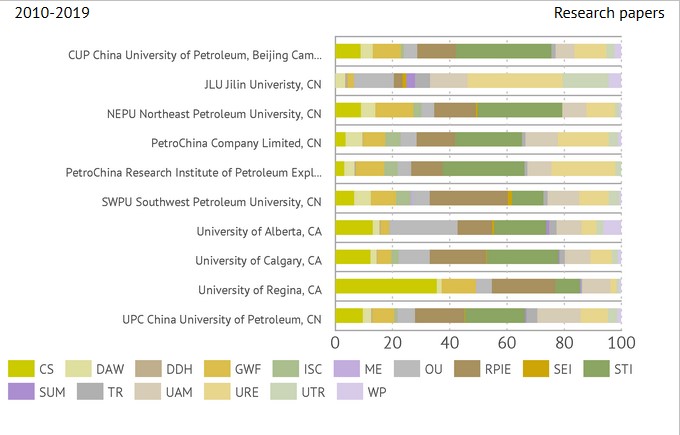
Source: Advanced Energy Technologies
CS — Chemical stimulation; D— Drilling and well elements; DDH — Directional drilling or hydraulic fracturing; GWF — Gas injection or water flooding; ISC — In-situ combustion; ME — Mechanical extraction; OU — Other unclassified; RPIE — Reservoir permeability improvement and extraction; SEI — Surface exploration and infrastructure; STI — Steam injection; SUM — Surface or underground mining; TR — Treatment and refinement; UAM — Undefined activation method; URE — Underground reservoir exploration; UTR — Uncommon thermal recovery; WP — Waste processing
Trends of development
This article was prepared in February 2020; however, the turbulent March events required a review of previous forecasts for the development of energy, including the prospects for the oil market. It is clear that by the end of March all futurological models will have collapsed and in order to create new ones it will take time to understand the essence of what is happening.
Two global events, almost coinciding in time, served as the basis for the current situation. Firstly, this is the rapid spread in the world of COVID-19, and especially in Europe and the USA in March. Secondly, the failure of the OPEC-plus oil deal in Vienna, which led to the collapse of oil prices, followed by all the major stock indexes. Pandemic, border closure, recession, bankruptcy, catastrophe - these words are increasingly present in news feeds, noticeably outweighing optimistic messages every day. These events undoubtedly are already negatively affecting the energy market. The problem lies not only in the lowering of oil prices to a critical level, when some of the producers can simply disappear from the market, but also as to what will happen to this market after the spread of COVID-19 has stopped. Will society need the same amount of primary energy production? Can this market quickly recover to its previous size if needed? Will the foundations of global integration remain in the economy, including energy, or will individual countries gravitate toward individualism? These are just a small part of the fundamental issues that will inevitably arise before the world community. And they will be followed by a host of more mundane issues, but also more specific and acute problems - where to get loans, will potential investors survive, will government subsidies for the development of renewable energy be preserved, will strict environmental standards for the use of fossil fuels remain in force, etc.
These events were preceded by a steady increase in world oil production over a long period of time despite significant fluctuations in world prices (Fig. 4). A multiple increase in production was provided by American shale oil producers (Fig. 41).
Fig. 41. U.S. Crude oil production and annual change
Source: U.S. Energy Information Administration (March 2020) / www.eia.gov
Bituminous and heavy oil producers in Canada also made a significant contribution to the growth of world production (Fig. 42); the production and primary processing of these types of oil significantly exceeded the production of light oil.
Fig. 42. Crude and synthetic oil production in Canada over the past decade
Source: Based on Canada Energy Regulator, Estimated Production of Canadian Crude Oil and Equivalent; reproduction is a copy of the version available at the NEB Website and that the reproduction has not been produced in affiliation with, or with the endorsement of the NEB
Thus, it was the production of unconventional oil in the United States and Canada that first of all ensured a global increase in production in recent years. At the same time, the OPEC countries and Russia significantly limited their production according to the OPEC-plus deal. In early March 2020, after the breakdown of negotiations in Vienna, this deal was voided. As a result, there was a catastrophic collapse in world oil prices, which coincided with the explosive growth of COVID-19 in Europe and the United States and the introduction of strict quarantine measures, a sharp decline in the intensity of air traffic, the closure of many offices and even entire production facilities, and a decrease in the consumption of petroleum products. Obviously, such almost simultaneous layering of problems is unprecedented. But that is not all. As many sources noted back in 2019, for example, [76], problematic trends were growing in the US shale industry, which led to negative cash flows in the industry and significantly limited access to debt and equity markets. Despite the fact that changes in the value of shares of major public oil and service companies did seem critical, and have sometimes shown good results (Fig. 43-44), in March 2020, these indicators collapsed by an average of 30%. In addition, according to the statements of analysts summarized in [77], the oil market is close to overstocking due to the filling of free tanks. Of course, this is similar to, if not collapse, then at least to the start of structural changes in the oil market.
Fig. 43. Change in the value of shares of some public companies engaged in oil production with hydraulic fracturing
Source: Yahoo Finance
Fig. 44. Dynamics of changes in the value of shares of some public companies engaged in the extraction of heavy and bituminous oil, as well as companies providing after-sales services
Source: Yahoo Finance
Clearly, if the situation does not change in the near future many private oil companies may go bankrupt and the state oil sector in many countries may face financial problems, and from a source of replenishment of budgets will turn into its consumer. The prevailing cost of oil production, the resource base of producers and potential countries to smooth out the emerging crisis will play a crucial role. At the end of 2019, IHS Markit commissioned by Saudi Aramco [79] calculated the costs of Post-tax breakeven costs for new oil projects at a 10% rate of return. The best results were shown by Arab producers, primarily Saudi Arabia (approximately 17 USD / bbl) up to 28-29 USD / bbl for offshore projects in the United Arab Emirates. For Russia, these indicators were in the range of 42-44 USD/bbl, for the United States — about 40-48 USD/bbl, for Brazil — 40-41 USD/bbl, Norway — 42 USD/bbl. The most expensive, according to this assessment, are offshore projects in China, Venezuela and Azerbaijan — more than 60 USD/bbl. Canada’s oil industry will be in a very vulnerable position. According to [80], the supply cost necessary for reimbursing fixed costs, operating costs, taxes, etc. (capital expenditures, operating costs, taxes) is a little over C$ 43/bbl for SAGD projects and C$ 70/bbl for surface mining of bituminous oil. Capital costs will be 44-48% of the total supply cost (Supply cost), followed by royalties and taxes — up to 25%, operating costs and fuel costs, which are especially significant for SAGD — up to 14%.
However, these estimates are made for the implementation of new projects and may not fully characterize the degree of flexibility and mobility of the existing infrastructure. For southern countries, including the United States, temporary preservation of onshore production is quite acceptable, and its re-growth will primarily be determined by market conditions. It will be more difficult to deal with offshore production, where its suspension can be fraught with high costs and environmental problems, the launch of new projects will be severely limited. First of all it will affect Kazakhstan, China, India, Venezuela, Azerbaijan and Angola.
Canada and the United States successfully overcame the price crisis in 2016, which instils certain optimism in the stability of their oil production; however, we should not forget that at that time their countries were severely limited by the countries participating in the OPEC-plus transaction, and Iran due to sanctions restrictions.
In Russia, the situation may be aggravated by a constant increase in the share of hard oil recovery, sanctioned advanced technologies, as well as large water cuts in wells, which can lead to their failure during a crisis shutdown in winter conditions. Also, as practice shows, weakening of the national currency can provide serious support to the oil sector. In March 2020, the head of the giant state oil company Rosneft, Igor Sechin told Russian television that the cost of oil production by Rosneft is only 3.1 USD/bbl, while it can maintain the existing production level for a considerable time without new projects..In addition, export deliveries of Russian oil to a group of East European refineries cannot be easily replaced with other grades of oil for technological or logistical reasons. As for deliveries to China, despite the expected decline in demand here, it is unlikely to occur solely at the expense of one of the main suppliers.
A difficult time also comes for oil refining all over the world. However, the summer season is approaching, when most plants carry out preventive and repair work. Most likely this will smooth out the negative consequences in this sector. Thus, the main blow to the current crisis will hit the investors of new unfinished or planned projects. Further difficulties may arise for producers in offshore fields of the countries mentioned above, as well as for producers of high viscosity and bituminous oil.
Perhaps it is the Arab countries that will benefit from this situation due to better oil quality, developed infrastructure and climatic advantages. However, it will not be easy. No one will surrender their markets without a fight. And here, in addition to the economic indicators of oil production itself, political processes, logistic factors, the financial condition of consumers, and of course the development of the situation with COVID-19 will play a significant role. Such models, taking into account the ongoing pandemic, were proposed, in particular, in [81–82]. The IEA in its baseline scenario considers a drop in oil demand, primarily due to China, in the first quarter of 2020 by 1.8 mb / day, and at the end of the year around 90,000 barrels per day [81]. With a pessimistic development of events, when the COVID-19 epidemic will spread for a longer time, the total drop in world oil demand may amount to a significant 730,000 barrels per day in 2020 [81].
In [82], the fall in oil demand in 2020 due to COVID-19 was estimated at 2 billion barrels, which corresponds to a reduction in daily production by about 5% compared to last year.
Two transport sectors — the aviation and automobile sectors — will experience the greatest drop, which will immediately affect the consumption of the corresponding types of fuel. Demand for jet fuel will fall by 20% with the lowest rates in April-May 2020. Global traffic in most countries of the world has already decreased by more than a third, and the lowest figures were in April 2020 — a decrease of more than 9 million bpd. A particularly significant drop in traffic is estimated in Malaysia, the Philippines, France, Italy, and the United States. Least of all affected will be Russia [82].
This is a brief analysis of the turbulent events of March 2020 and some forecasts of their impact on the world oil market. A really difficult and unusual time has come, which inevitably tests many institutions of modern society, including political regimes, economic models, and human relations.
References
[1] Heavy Oil and Natural Bitumen—Strategic Petroleum Resources (PDF ) / U.S. Department of the Interior, U.S. Geological Survey/ pubs.usgs.gov
[2] Unconventional Oil & Gas Production/ IEA ETSAP - Technology Brief P02/ May 2010/IEA ETSAP / iea-etsap.org
[3] Technically Recoverable Shale Oil and Shale Gas Resources: An Assessment of 137 Shale Formations in 41 Countries outside the United States (PDF) /June 2013/ U.S. Energy Information Administration(EIA)/ www.eia.gov
[4] Heavy Oil and Natural Bitumen Resources in Geological Basins of the World (PDF) / Richard F. Meyer, Emil D. Attanasi, and Philip A. Freeman/USGS/ pubs.usgs.gov
[5] Geology and Resources of Some World Oil-Shale Deposits (PDF) /Scientific Investigations Report 2005–5294/ U.S. Department of the Interior, U.S. Geological Survey/ John R. Dyni/ USGS/ pubs.usgs.gov
[6] BP Statistical Review of World Energy 2019 (PDF) / BP / www.bp.com
[7] 2010 Survey of Energy Resources (PDF) / World Energy Council/ www.worldenergy.org
[8] Extra Heavy Oils In The World Energy Supply (PDF) /Ladislas Paszkiewicz/ Senior Vice President Americas/Total/ Oil Production.net / www.oilproduction.net
[9] Heavy Oil/ Irene M. Færgesta/ Schlumberger / www.slb.com
[10] Heavy Oil vs. Light Oil/ March 2011/ BP/ www.bp.com
[11] US shale growth could once again pave the way to an oversupplied market/ December 2017/Thomas Liles, Analyst/RYSTAD ENERGY/ www.rystadenergy.com
[12] Petroleum Resources Management System/Society of Petroleum Engineers / www.spe.org
[13] Heavy Oil and Natural Bitumen Resources in Geological Basins of the World (PDF) / By Richard F. Meyer, Emil D. Attanasi, and Philip A. Freeman/U.S. Department of the Interior, U.S. Geological Survey/USGS/ pubs.usgs.gov
[14] Heavy Oil and Bitumen Petroleum Systems in Alberta and Beyond: The Future Is Nonconventional and the Future Is Now (PDF) / Frances J. Hein, Dale Leckie, Steve Larter, John R. Suter / Research.net / www.researchgate.net
[15] Petroleum and other liquids/ U.S. Energy Information Administration (Jan 2020) / www.eia.gov
[16] An Estimate of Recoverable Heavy Oil Resources of the Orinoco Oil Belt, Venezuela (PDF) / USGS/ pubs.usgs.gov
[17] Natural Bitumen Resources of the United States/USGS/ pubs.usgs.gov
[18] AlbertaEnergyRegulator/ Reserves/ Alberta Energy Regulator / www.aer.ca
[19] Iran has 85 billion barrels heavy oil reserve: report/ August 30, 2008/ Reuters/ www.reuters.com
[20] Heavy Oil in Iraq: Review/ The Journal of Scientific and Engineering Research/ Volume 4(Number 8), р.:134-141 · September 2017/ Rzger A. Abdula/ Soran University/ Research Gate / www.researchgate.net
[21] Kuwait presses ahead with heavy oil production expansion/ April 25th 2019 | Kuwait | Crude oil | Kuwait Petroleum Corp./ The Economist / www.eiu.com
[22] World Petroleum Resources And Reserves/ Joseph Riva/ Google Books / books.google.at
[23] The Heavy Oil Resources of the United States (PDF) / U.S.DOE 1983/ Rand Corporation / www.rand.org
[24] Heavy Oil Contributes to Brazil's Energy Self-Sufficiency/ Rigzone / www.rigzone.com
[25] Трудноизвлекаемая нефть: потенциал, состояние и возможности освоения (DF) / ОЛЕГ ПРИЩЕПА, ЭЛИК ХАЛИМОВ, ФГУП «ВНИГРИ»/ Нефтегазовая Вертикаль, 2011, 5/ www.ngv.ru
[26] Russian Riches: Untapped Heavy Oil/ Rigzone / www.rigzone.com
[27] Extraction of petroleum/Wikipedia / en.wikipedia.org/wiki/Extraction_of_petroleum
[28] Evaluation of post-CHOPS (Cold Heavy Oil Production with Sands) Enhanced Oil Recovery Methods/ Rangrizshokri, Alireza/ ERA / era.library.ualberta.ca
[29] Enhanced Oil Recovery / Oilfield Glossary/ www.glossary.oilfield.slb.com
[30] CHOPS – Cold Heavy Oil Production with Sands in the Canadian Heavy Oil Industry (PDF) / Government of Alberta / open.alberta.ca
[31] Extra Heavy Oil and Bitumen. Impact of Technologies on the Recovery Factor « The Challenges of Enhanced Recovery »/ François CUPCIC/ Total/Slideshare / www.slideshare.net
[32] Non-Thermal Heavy Oil Recovery Methods, 1976/ S.M. Farouq Ali / One Petro / www.onepetro.org
[33] Evaluation of Non-thermal EOR Techniques For Heavy Oil Production, 1998/ G. Brook(University of Calgary)| A. Kantzas(University of Calgary)/ One Petro / www.onepetro.org
[34] Has the Time Come for EOR?/ Rifaat Al-Mjeni, Shyam Arora, Pradeep Cherukupalli, John van Wunnik, John Edwards, Betty Jean Felber, Omer Gurpinar, George J. Hirasaki, Clarence A. Miller, Cuong Jackson, Morten R. Kristensen, Frank Lim, Raghu Ramamoorthy/ Schlumberger, 2011/ www.slb.com
[35] Athabasca oil sands/ Wikipedia / en.wikipedia.org/wiki/Athabasca_oil_sands
[36] Enhanced oil recovery/ Wikipedia / en.wikipedia.org/wiki/Enhanced_oil_recovery
[37] What Is EOR, and How Does It Work?/ Rigzone / www.rigzone.com
[38] Enhanced Oil Recovery: An Update Review, 2010/ V.Alvarado, E.Manrique/ Energies2010, 3(9), 1529-1575/ MDPI / www.mdpi.com
[39] Enhanced oil recovery: challenges & opportunities (PDF) / SUNIL KOKAL, ABDULAZIZ AL-KAABI/ EXPEC ADVANCED RESEARCH CENTRE, SAUDI ARAMCO/ World Petroleum / www.world-petroleum.org
[40] EOR –The Time is NowIts Contribution to World Oil Supply(PDF) / Paul L. Bondor/ Society of Petroleum Engineers / www.spe.org
[41] HEAVY OIL/ Working Document of the NPC Global Oil & Gas Study (PDF) / 2007/ NATIONAL PETROLEUM COUNCIL/ Team leader: Brian Clark/National Petroleum Council/ npchardtruthsreport.org
[42] Developing the Heavy Oiland Oil SandsAssets/ Halliburton/ www.yumpu.com
[43] 2014 worldwide EOR survey by Leena Koottungal / Oil & Gas Journal/ www.ogj.com
[44] Whatever happened to enhanced oil recovery?/ Christophe McGlade, Glenn Sondak, Mei Han/ 28 November 2018/ International Energy Agency / www.iea.org
[45] Enhanced oil recovery of heavy oils by non-thermal chemical methods/ Kumar, Rahul, active 2013/ The University of Texas at Austin/ repositories.lib.utexas.edu
[46] A Review of SAGD-ISSLW/ H. H. Kiasari , N. R. Nokandeh , M. Khishvand , A. Mansoori &R. A. Firoozjaee / 30 Jan 2014/ Petroleum Science and Technology /Volume 32, 2014 - Issue 6/ Informa UK Limited / www.tandfonline.com
[47] Heavy-oil Reservoirs: Their Characterization and Production (PDF) /Satinder Chopra, Larry Lines, Douglas R. Schmitt and Mike Batzle/ University of Alberta / sites.ualberta.ca
[48] Steam-assisted gravity drainage/ Wikipedia / en.wikipedia.org/wiki/Steam-assisted_gravity_drainage
[49] Canada's oil sands, opportunities and challenges to 2015 : an energy market assessment/ National Energy Board, Calgary, AB (Canada)/International Nuclear Information System / inis.iaea.org
[50] Coalinga/ Chevron/BrightSource Solar-to-Steam Demonstration Facility/ BrightSource Energy / www.brightsourceenergy.com
[51] California Becomes a Proving Ground for Solar EOR Technology/ Matt Zborowski, 2017/ Journal of Petroleum Technology / pubs.spe.org
[52]Miraah Solar Project/ Petroleum Development Oman / www.pdo.co.om
[53] Enhanced Oil Recovery/ Nitrogen Generationand Nitrogen Rejection (PDF)/ Linde Engineering / www.linde-engineering.com
[54] THAI-New Air Injection Technology for Heavy Oil Recovery and In-situ Upgrading, March 2001/ M. Greaves(University Of Bath)| A.M. Saghr(University Of Bath)| T.X. Xia(University Of Bath)| A. Turtar(Petroleum Recovery Institute)| C. Ayasse(Petroleum Recovery Institute) / One Petro / www.onepetro.org
[55] The evaluation of CO2-based vapour extraction (VAPEX) process for heavy-oil recovery/ Farshid Torabi, Benyamin Yadali Jamaloei, Blair M. Stengler, Drew E. Jackson/ Journal of Petroleum Exploration and Production Technology,volume 2, pages93–105(2012)/ Springer / link.springer.com
[56] ENHANCED OIL RECOVERY/ Eor Brochure 2012/ Shell/ Scribd / www.scribd.com
[57] 2018 EOR Survey in China/ Hu Guo, Zhengbo Wang, Conference: SPE Improved Oil Recovery Conference/ January 2018/ ResearchGate / www.researchgate.net
[58] Особенности Разведки И Разработки Месторождений Нетрадиционных Углеводородов (PDF) / Материалы Международной научно-практической конференции/ 2 – 3 СЕНТЯБРЯ 2015 ГОДА/ ГПНТБ СО РАН / www.spsl.nsc.ru
[59] Trends and Challenges in the Heavy Crude Oil Market (PDF) / 4th Heavy Oil Working Group, Bogota –September 22, 2015/ Arthur D. Little/ ECP Americas / www.ecpamericas.org
[60] Feasibility study on application of the recent enhanced heavy oil recovery methods (VAPEX, SAGD, CAGD and THAI) in an Iranian heavy oil reservoir/ Somayeh Heidary, Ali A. Dehghan&Sedigheh Mahdavi/ Pages 2059-2065 | Published online: 27 Nov 2017/ Taylor &Francis Group / www.tandfonline.com
[61] Oilshale/ Wikipedia / en.wikipedia.org/wiki/Oil_shale
[62] Oil Shale: History, Incentives, and Policy (PDF) /Anthony Andrews/2006/ Federation of American Scientists / fas.org
[63] Oil Shale Research in the United States (PDF) / Profiles of Oil Shale Research and Development Activities In Universities, National Laboratories, and Public Agencies/ NTEK, Inc./ 2011/ U.S. Department of Energy / www.energy.gov
[64] An Assessment of 01/ Shale Technologies/ Ch 5–Technology (PDF) / Princeton University / www.princeton.edu
[65] Shale oil extraction/ Wikipedia / en.wikipedia.org/wiki/Shale_oil_extraction
[66] Oil Shale Pyrolysis/Guenther Glatz/ Stanford University2013/ Stanford Education / large.stanford.edu
[67] New development of Chinese oil shale activities (PDF) / Shuyuan Li & Jialin Qian/ 30th Oil Shale Symposium, October 18-22, 2010/ Costal Miners / www.costar-mines.org
[68] Shale Industrialization Unit (SIX)/ Petrobras / petrobras.com.br
[69] Dry thermal processor/ US7343893A/1993.06.09/ ALBERTA OIL SANDS TECH [CA]/CAPLE RODERICK [CA]; GOODWIN SEAN [CA]; TACIUK GORDON [CA]; TACIUK WILLIAM [CA]
[70] Enefit Development Activities in Shale Oil Production (PDF) / Indrek Aarna / Head of Retorting Technology Development Department Enefit/ 2013/ Abo Academi University / web.abo.fi
[71] OIL SHALEENERGYTOFUELOURFUTURE/ NOSA/ 2013 Update/ Oil Shale Association / oilshaleassoc.org
[72] Secure Fuels from Domestic Resources/ Profiles of Companies Engaged in Domestic Oil Shale and Tar Sands Resource and Technology Development/ NTEK, Inc./ 2011// U.S. Department of Energy / www.energy.gov
[73] Coaxing Oil from Shale/ Oilfield Review 2011/Schlumberger/ Pierre Allix, Alan Burnham, Tom Fowler, Michael Herron, Bill Symington/ Mafiadoc / mafiadoc.com
[74] Environmental Review of Selected Oil Shale Technologies (PDF) / James R. Covell, RDS-EG&G Technical Services/Washington Division, URS/Costar Miners / www.costar-mines.org
[75] Oil Shale (PDF) / Dr. Victor C. Alderson, President of the Colorado School of Mines, in The Oil Shale Industry/ Colorado School of Miles/ emfi.mines.edu
[76] U.S. Fracking Sector Spills More Red Ink— Again Cash Flow Remains Disappointing to Debt, Equity Investors (PDF) / Clark Williams-Derry, IEEFA Energy Finance Analyst Kathy Hipple / IEEFA Financial Analyst November 2019/IEEFA / ieefa.org
[77] The World’s on the Brink of Running Out of Places to Put OilBy Alex Longley/26 March 2020 / Bloomberg/ www.bloomberg.com
[79] Saudi Arabian Oil Company (Saudi Aramco) the “International Offering Circular” (PDF) / 2019/ Saudi Aramco/ www.saudiaramco.com
[80] Canadian Oil Sands Supply Costs And Development Projects (2016-2036) (PDF)/ Canadian Energy Research Institute/ ceri.ca
[81] Oil Market Report - March 2020/ IEA / www.iea.org
[82] COVID-19 Report - Scenarios and impact on global energy markets / 24 MARCH 2020/ Rystad Energy research and analyses/ www.rystadenergy.com

